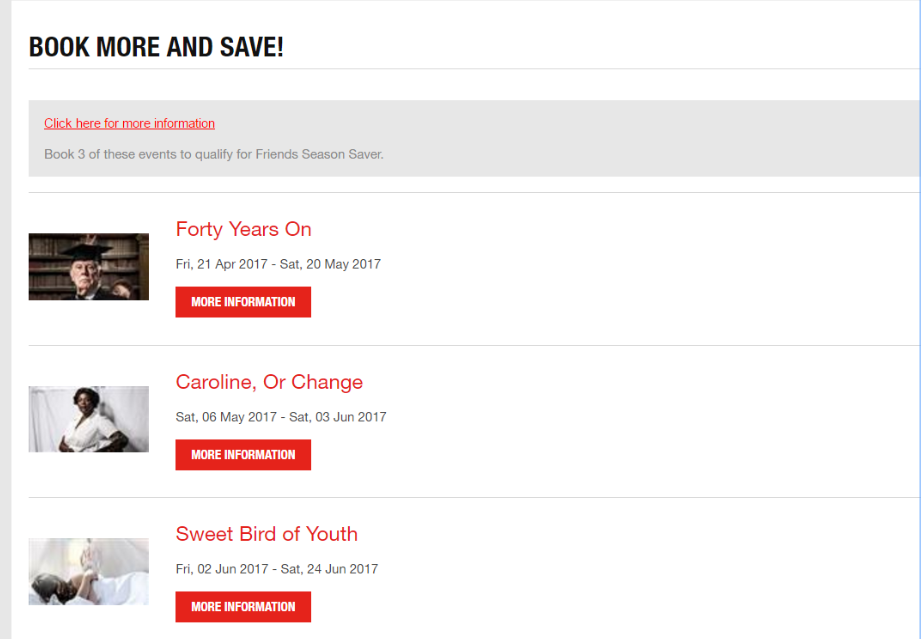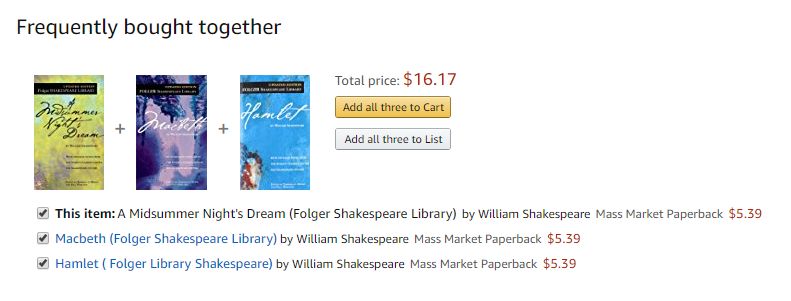3 min read
How Multi-Buy Cross-Selling Solves Customer Churn
-png.png)
Customers who attend multiple events or reattend, are by definition more engaged and less likely to churn. As customers reattend you’re likely to learn more about their interests and purchasing habits allowing for better targeting.
Customer churn, or the percent of customers who come one year but not the next, presents a challenge for arts organisations. In our recent Benchmark Report, we found that 70% of customers who attended performances in 2014 did not return in 2015. The key to solving this problem is improving reattendance in your patrons.
Why reattendance matters
One path towards decreasing churn is to entice customers back multiple times a season. Customers who attend multiple events or reattend, are by definition more engaged and less likely to churn. In addition, if your single ticket marketing costs stay the same, but a portion of those audience members buy an additional ticket, then the marketing cost per ticket has just decreased.
As customers reattend you’re likely to learn more about their interests and purchasing habits allowing for better targeting. That means you’ll spend less to get them to buy a ticket in the future. Best-case scenario, reattenders not only make marketing budgets more efficient in the current year but they’re also likely to cost less to market to in subsequent years.
So, how do we get some of those 70% of one-time visitors to reattend? First, we need to make sure they know what else is playing and second, we need to set a price at which they feel that they’re getting value for the risk of attending an additional event they might not know as well. Enter the multi-buy cross-sell.

Multi-buy cross-selling at Chichester Festival Theatre.
How multi-buy cross-sells can help
A multi-buy is a type of discount in which customers who buy tickets to multiple events at once are offered a discount on their tickets. It’s a form of bundling – not much different from a subscription or flex pass – in which patrons themselves decide which shows to group together. A customer might not want to buy tickets to that second show on its own, but if it were priced lower they might take advantage of the opportunity.
But the multi-buy alone isn’t enough. We also need to find ways to alert our customers about the other shows playing in a way that makes it easy to make the purchase decision. For this challenge, we need to cross-sell. Cross-selling is quite simply the act of selling an additional, similar product to the same customer.
A quintessential example of cross-selling is the online retail king Amazon, which attributes 35% of its revenues to this marketing strategy. Think about it. If I go to buy a copy of ‘A Midsummer Night’s Dream’ I’ll immediately see options to purchase ‘Macbeth’ and ‘Hamlet’ as well. Note that Amazon doesn’t ask if I want to purchase the complete works of William Shakespeare (a season subscription in our analogy), but just one or two related titles. It’s a small ask that will hopefully be a value-add to the customer who might be interested in expanding their library.

The good news for arts organisations is that more and more arts patrons are purchasing tickets online, giving us a fantastic opportunity to offer them this option.
Now that we’ve defined them, what impact should we expect from combining cross-selling with multi-buy discounts? In the hypothetical example below, we assume that 20% of ticket buyers convert to buying two tickets, that the multibuy offers a 20% discount on ticket prices, and that there’s no change to the marketing budget.
The example shows a 15% increase in net revenue, a 17% increase in marketing efficiency (marketing expense per ticket sold), and of course, more engagement with the arts organization. In addition, we would expect that over time that single marketing budget could come down because we’ll get better and better at targeting the customers who purchase more tickets. Not bad, right?

Four Tips To Get You Started
If you do decide to try the multibuy cross-sell, here are four tips to keep in mind.
1. Pay attention to the user experience.
Amazon’s multibuy cross-selling tool doesn’t look particularly nice, but then again they’re the market leader in online retail so it doesn’t need to. For arts organisations, we face competition at all turns and should invest in making sure that the online user experience is easy and even delightful. We take great care of our audiences in our venues, we should also take care of them in our digital space.
2. Don’t cross-sell everything.
Take the time to think about what shows, films or concerts in your current season will pair well with others. Amazon’s cross-selling engine works because they have taken care to think about what will cross-sell well. They may use complex machine learning techniques to do so, but then again they are selling hundreds of millions of products and we aren’t.
3. Use email automation.
Even if you aren’t able to create a cross-selling experience online, use the data you collect from online ticket sales to generate targeted offer emails to customers. You can do this before or after the customer has seen the show, but be sure to be as targeted as possible to avoid unsubscribes. Remember, every email you send should offer value to the recipient.
4. Don’t abandon subscriptions just because they are on the decline.
If people are still buying full subscriptions that means they are providing value to your patrons and you should continue that offering. That said, it is worth experimenting with new ways to encourage reattendance, because ultimately it will mean a more efficient business and one that is more able to fulfil its core mission to produce interesting and creative work.
More insights and best practice ideas from Spektrix
Ethan Joseph is a former member of the Spektrix team

